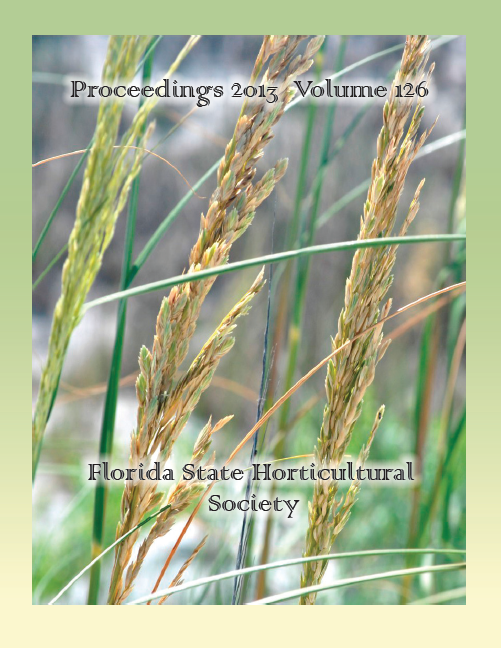Published 2013-12-01
Keywords
- display life,
- interiorscapes,
- flowering,
- indoor house plants,
- watering
- wetting agent,
- available water ...More
Abstract
Watering of indoor house plants can be time consuming and problematic when people are away for periods of time. Increasing the potting medium water-holding capacity without sacrificing aeration and utilizing slow-release water sources are two potential ways to extend the intervals between waterings without the use of specialized planters. This experiment was conducted to determine if a medium surfactant drench (S) and cellulosic water (CW), respectively, could provide those benefits. Uniform, finished Spathiphyllum ‘Patrice’ plants grown in 6-inch pots were used. The peat-pine bark-perlite growing medium was left untreated (control), drenched with a S (Aqua-Gro® L) at 600 ppm, inserted with three 50-mL spikes filled with CW (SolidWater™) or treated with both S and CW. Pots were then brought to container capacity, weighed, and held under simulated home/office conditions. Plants were weighed daily and checked visually for wilt. When the wilt threshold was met, the plants were re-watered, re-weighed, and monitored for the next wilt event. Each plant was allowed to wilt three times. The S-alone treatment did not increase average days to wilt (DTW) compared to the control even though medium rewetting was highest for both treatments that included S. CW treatment increased average DTW (10.4 d with surfactant, 9.6 d alone) compared to the control (8.7 d) treatment. Initial and final weights of the spikes showed that, on average, only 29% of the CW had been released after 33 d. This slow release could be due to the populations of microorganisms in the growing medium, amount of contact area between the CW and the medium, and/or the cellulose content/viscosity of the CW.

